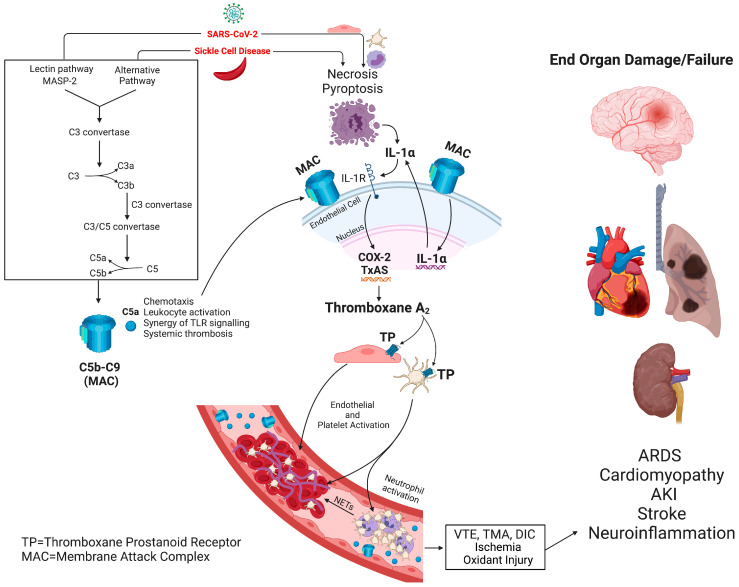Figure 1.
Putative mechanism of complement-mediated microvascular thrombosis and vaso-occlusive disease in SCD and COVID-19: SARS-CoV-2 infection and sickle cell disease induce complement activation and formation of membrane attack complex leading to necrosis and pyroptosis of endothelial cells, platelets, and monocytes and accumulation of IL-1α. IL-1α stimulates the IL-1 receptor expressed on endothelial cells leading to thromboxane synthesis. Thromboxane A2 via the TP receptor activates platelets leading to platelet activation, platelet neutrophil partnership, neutrophil activation, and the release of neutrophil extracellular traps (NETs), thrombo-inflammation, oxidative stress, and subsequent end-organ damage and failure. The current review article is primarily focused on eicosanoid signaling in platelets; therefore, other receptors and pathways were excluded from Figure 1 for the reader’s convenience. COX, cyclooxygenase; IL, interleukin; NETs, neutrophil extracellular traps; TP, thromboxane prostanoid receptor; MAC, membrane attack complex; VTE, venous thromboembolism; TMA, thrombotic microangiopathy; DIC, disseminated intravascular thrombosis; ARDS, acute respiratory distress syndrome; AKI, acute kidney injury.

